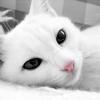First of all, we are going to try to understand some of the basics mechanics of dreaming.
During a full eight-hour night sleep, most dreams occur in the typical two hours of REM.
http://science.howst...rain/dream2.htm
The release from aminergic inhibition stimulates cholinergic reticular neurons in the brainstem and switches the sleeping brain into the highly active REM state, in which acetylcholine levels are as high as in the waking state. 5-HT and NE, on the other hand, are virtually absent during REM.
http://www.ncbi.nlm....cles/PMC534695/
So ok, you dream during the REM phase, when your brain is loaded with high levels of acetylcholine and low levels of serotonin and norepinephrine.
Inhibition of 5HT reuptake occurs with SSRIs, SNRIs, tricyclic antidepressants, and the antidepressant trazodone and would be expected to promote wakefulness by increasing the binding to 5HT1 and 5HT2 receptors. By increasing binding to 5HT1 receptors, an increase in wakefulness may occur in association with suppression of REM sleep.
http://www.ncbi.nlm....les/PMC3076958/
Dopamine reuptake inhibition would be expected to have wake promoting effects.
http://www.ncbi.nlm....les/PMC3076958/
As a result, medications which inhibit this enzyme, monoamine oxidase inhibitors (MAOI), increase the available amount of NE, 5HT, epinephrine, and DA, and, much like agents which inhibit the reuptake of these neurotransmitters, MAOI may have some degree of wake promoting effects.
http://www.ncbi.nlm....les/PMC3076958/
Among antidepressant and antipsychotic agents, suppression of REM sleep appears to primarily derive from blockade of Ach receptors (occurs primarily with TCAs and a number of the antipsychotic agents) and increasing 5HT binding to 5HT1A receptors, which occurs with TCAs, MAOIs, SSRIs, and SNRIs.
http://www.ncbi.nlm....les/PMC3076958/
So, high levels of serotonin and dopamine seems to promote wakefulness and supress REM sleep.
Well, now we should look again at the compounds that I mentioned in my first post:
- Uncaria Rhynchophylla
Monoamine oxidase B (MAO-B) inhibition by active principles from Uncaria rhynchophylla.
http://www.ncbi.nlm....pubmed/15890481
Geissoschizine methyl ether, an alkaloid from the Uncaria hook has third-generation antipsychotic-like actions at the dopamine and serotonin receptors.
http://www.ncbi.nlm....pubmed/21951966
Rhynchophylline and isorhynchophylline inhibit NMDA receptors expressed in Xenopus oocytes.
https://www.ncbi.nlm...pubmed/12433591
- Ziziphus Jujuba
Dopamine and serotonin activity:
Interactions were demonstrated with the adenosine A(1) receptor, dopamine transporter and dopamine D(5) receptor (antagonist activity), serotonin receptors (5-HT(1B) and 5-HT(6) antagonist activity) and the GABA benzodiazepine receptor at a concentration of 100 microg/ml or lower. these results suggested that the hypnotic effect of jujubosides on normal rats may be influenced by circadian rhythm and the serotonergic system may involve in the hypnotic effect of jujubosides. Jujubosides may be good source of lead compounds for novel hypnotics.
NMDA inhibition.
http://www.ncbi.nlm....pt=AbstractPlus
- Albizia Julibrisin
The present study was undertaken to investigate the antidepressant-like effects of the methylene chloride fraction of Albizzia julibrissin (MCAJ) using a tail suspension test in mice. MCAJ was orally administered at 50, 100, or 200 mg/kg to mice, 1 h before the tail suspension test. Acute treatment with MCAJ at 200 mg/kg significantly reduced the immobility time compared with the control group, and thus showed an antidepressant-like effect. This effect was comparable to that of imipramine at 10 mg/kg. This antidepressant-like effect was reversed by treatment with WAY-100635 (a 5-HT1A receptor antagonist) or pindolol (a 5-HT1A/1B receptor antagonist). However, the antidepressant effect of MCAJ was not effected by treatment with GR55562 (a 5-HT1B receptor antagonist) or ketanserin (a 5-HT2A receptor antagonist). Therefore, our findings suggest that MCAJ exerts its antidepressant-like effect via the 5-HT1A receptor system.
So, we know that dopamine and serotonin plays a mayor role in wakefulness, and they supress REM phase in some way. Also, our three herbs interact with this sistems.
Uncaria works like the antipsychotic medication Aripiprazole.
When looking at the level of the receptors, geissoschizine methyl ether is a potent agonist of the 5-HT1A receptors while it is inhibitory at the 5-HT2A, 5-HT2C, and 5-HT7 receptors at the same concentration range, with the possibility of being a partial agonist at higher doses. This profile is very similar to the anti-psychotic drug Aripiprazole.
http://www.ncbi.nlm....pubmed/21951966 .
Does Aripiprazole interfere with dreaming?
105 reported cases of abnormal dreams while using Aripiprazole.
https://www.druginfo...mal dreams.html
Some anecdotal testimonies of antipsychotics causing lucid dreaming.
https://drugs-forum....ad.php?t=240904
Uncaria and Jujuba shows NMDA inhibition like we show before.
Does NDMA inhibitor interfere with dreaming?
Ketamine acts primarily as an antagonist of the NMDA receptor, and this action accounts for most of its effects.
http://journals.lww...._Tricks.39.aspx
Ketamine's other measurable effects on the body include rapid-eye movements, salivation, and the production of brainwave activity mimicking that of a dream state. So. if you look at the facts, you'll see what we have here is a safe, highly effective, and extremely repeatable means of inducing a lucid dream state at will. When administered in the correct dose, Ketamine is a lucid dream enabler (LDE).
How I think this suplement works on inducing lucind dreaming?
I think the main responsable is Uncaria Rhynchophylla because of:
-His MAO-B inhibition.
(+)-catechin and (-)-epicatechin inhibit the degradation of dopamine during the REM phase.
-His 5-HT regulation.
Geissoschizine methyl ether modulates the amount of serotonin in the brain during the REM phase.
-His NMDA inhibition.
I don't know why yet, but it seems to be a link between NMDA and lucid dreaming.
My hypothesis is that the brain shut down the consciousness lowering the levels of dopamine and serotonin during the dreaming phase. Uncaria doesn't alow to do that, keeping your mind awake even when you are sleeping, and causing lucid dreaming.
On topic: Would galantamine work as well?
-Galantamine enhances dopaminergic neurotransmission in vivo via allosteric potentiation of nicotinic acetylcholine receptors.
http://www.ncbi.nlm....pubmed/16641937
-On the basis of the studies reviewed, galantamine does not appear to affect serotonin (5-HT) release in the brain.
http://www.life-enha...nsmitter-spiral
-Noradrenaline is the brain’s version of adrenaline. In another in vivo microdialysis study, it was shown that galantamine with nicotine given at ineffective doses increased noradrenaline release, although galantamine (3 mg/kg) alone did not affect the release in the hippocampus of rats.
http://www.life-enha...nsmitter-spiral
-Galantamine seems to potentiate of NMDA receptors.
http://www.ncbi.nlm....pubmed/15121761
In conclusion, if our hypothesis is right, galantamine doesn't see like the best way to induce lucid dreaming. Galantamine increases the acetylcholine, which is already elevated during dreaming, but Uncaria also acts increasing the acetylcholine in the brain:
Geissoschizine methyl ether, a corynanthean-type indole alkaloid from Uncaria rhynchophylla as a potential acetylcholinesterase inhibitor.
http://www.ncbi.nlm....pubmed/21714741
So, while Galantamine acts on dopamine an acetylcholine, Uncaria acts on Acetylcholine, Serotonin, Dopamine and MNDA inhibition, all of them seems related with lucid dreaming. Uncaria seems to be a superior option for lucid dreaming and maybe even for brain health proposes:
Isorhynchophylline treatment improves the amyloid-β-induced cognitive impairment in rats via inhibition of neuronal apoptosis and tau protein hyperphosphorylation.
http://www.ncbi.nlm....pubmed/24164737
Neuroprotective effects of rhynchophylline against ischemic brain injury via regulation of the Akt/mTOR and TLRs signaling pathways.
http://www.ncbi.nlm....pubmed/25079660
Geissoschizine methyl ether, an alkaloid from the Uncaria hook, improves remyelination after cuprizone-induced demyelination in medial prefrontal cortex of adult mice.
http://www.ncbi.nlm....pubmed/24190599
Effects of the hook of Uncaria rhynchophylla on neurotoxicity in the 6-hydroxydopamine model of Parkinson's disease.
http://www.ncbi.nlm....pubmed/21714741
Anticonvulsant effect of Uncaria rhynchophylla (Miq) Jack. in rats with kainic acid-induced epileptic seizure.
http://www.ncbi.nlm....pubmed/10467459
Uncaria rhynchophylla, a Chinese medicinal herb, has potent antiaggregation effects on Alzheimer's beta-amyloid proteins.
http://www.ncbi.nlm....pubmed/16676329
And for overall health:
Uncarinic Acid C Isolated from Uncaria rhynchophylla Induces Differentiation of Th1-Promoting Dendritic Cells Through TLR4 Signaling.
http://www.ncbi.nlm....pubmed/21499439
Inhibition of phospholipase cgamma1 and cancer cell proliferation by triterpene esters from Uncaria rhynchophylla.
http://www.ncbi.nlm....pubmed/10869194
Please, let me know if I need some more references. Thanks. Also, excuse my english, is not my main language.
PD: I do not sell Uncaria or any other thing. I just get pissed off with the votes. And yes, Uncaria is one of my favorites herbs, extremely underrated though.





















































